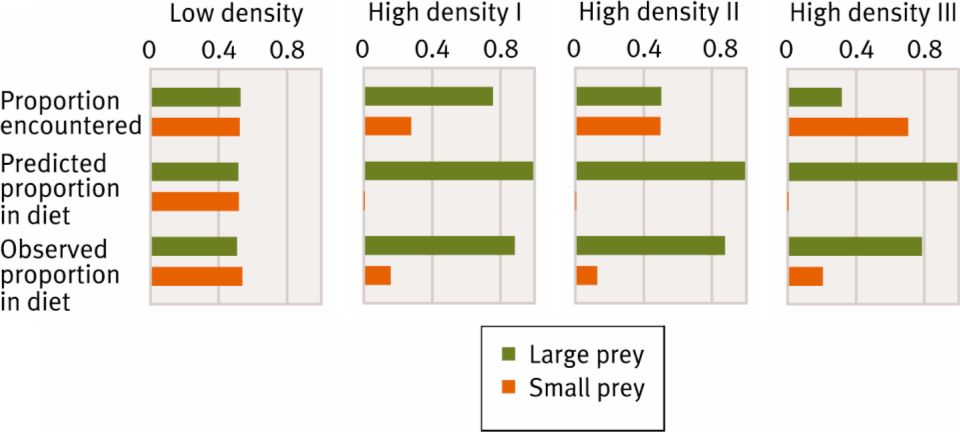
The optimal foraging theory predicts that,
at high encounter rates (high prey densities) with the most profitable prey item
(large prey),
less profitable items (small prey) will not be eaten regardless of the encounter rate
with the latter.
Data from the experiment with great tits feeding on mealworms
supports this theory.
